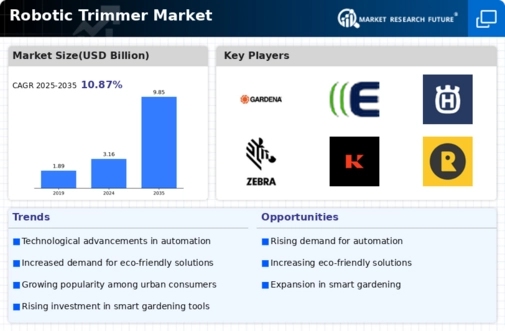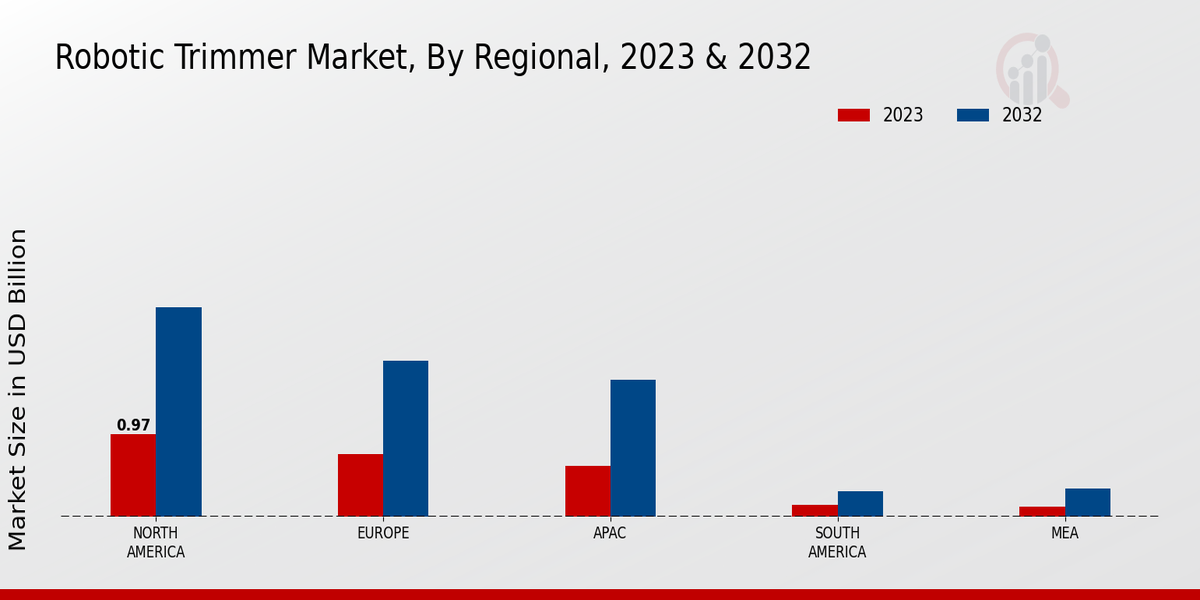Rising Disposable Income
The Global Robotic Trimmer Market Industry is positively impacted by rising disposable income levels among consumers. As individuals and families experience increased financial stability, they are more inclined to invest in home improvement and landscaping technologies. Robotic trimmers, which offer convenience and efficiency, become more accessible to a broader audience. This trend is evident in various regions where economic growth is fostering a culture of home automation. Consequently, the market is poised for expansion, with projections indicating a substantial increase in demand as disposable income continues to rise.
Technological Advancements
The Global Robotic Trimmer Market Industry is experiencing rapid technological advancements that enhance the efficiency and effectiveness of robotic trimmers. Innovations such as improved navigation systems, AI-driven algorithms, and enhanced battery life contribute to the growing appeal of these devices. For instance, the integration of GPS technology allows for precise trimming patterns, reducing the time and effort required for lawn maintenance. As a result, the market is projected to reach 3.16 USD Billion in 2024, indicating a strong demand for advanced robotic solutions in landscaping.
Environmental Sustainability
The Global Robotic Trimmer Market Industry is also influenced by a growing emphasis on environmental sustainability. Robotic trimmers are often designed to operate on electric power, reducing carbon emissions compared to traditional gas-powered lawn mowers. This shift towards eco-friendly gardening solutions aligns with global initiatives aimed at reducing environmental impact. As consumers become more environmentally conscious, the demand for robotic trimmers is likely to increase. This trend is expected to contribute to a compound annual growth rate of 10.88% from 2025 to 2035, reflecting a broader commitment to sustainable practices in landscaping.
Labor Shortages in Landscaping
The Global Robotic Trimmer Market Industry is responding to labor shortages in the landscaping sector. Many regions face challenges in finding skilled labor for outdoor maintenance tasks, leading to increased interest in automated solutions. Robotic trimmers provide a viable alternative, allowing homeowners and businesses to maintain their lawns without relying heavily on human labor. This trend is particularly relevant in urban areas where labor costs are rising. As a result, the market is likely to see sustained growth as more consumers turn to robotic solutions to address these labor challenges.
Increasing Adoption of Smart Home Devices
The Global Robotic Trimmer Market Industry benefits from the increasing adoption of smart home devices. Homeowners are increasingly seeking automation solutions that simplify their daily tasks, and robotic trimmers fit seamlessly into this trend. These devices can be controlled remotely via smartphone applications, allowing users to schedule trimming sessions and monitor their lawns from anywhere. This convenience is likely to drive market growth, as consumers prioritize efficiency and ease of use. The market is expected to expand significantly, with projections indicating a rise to 9.85 USD Billion by 2035.





















Leave a Comment